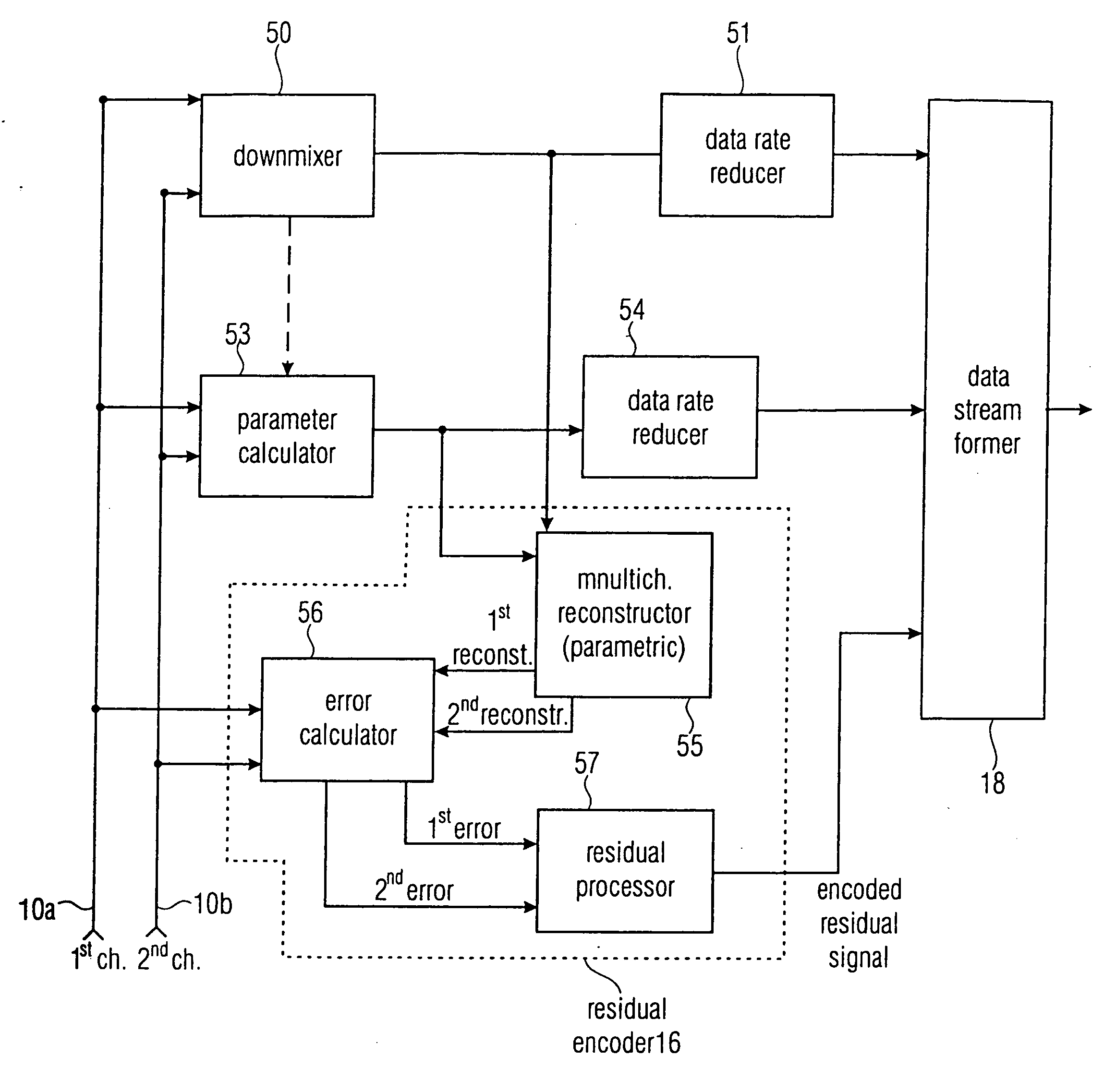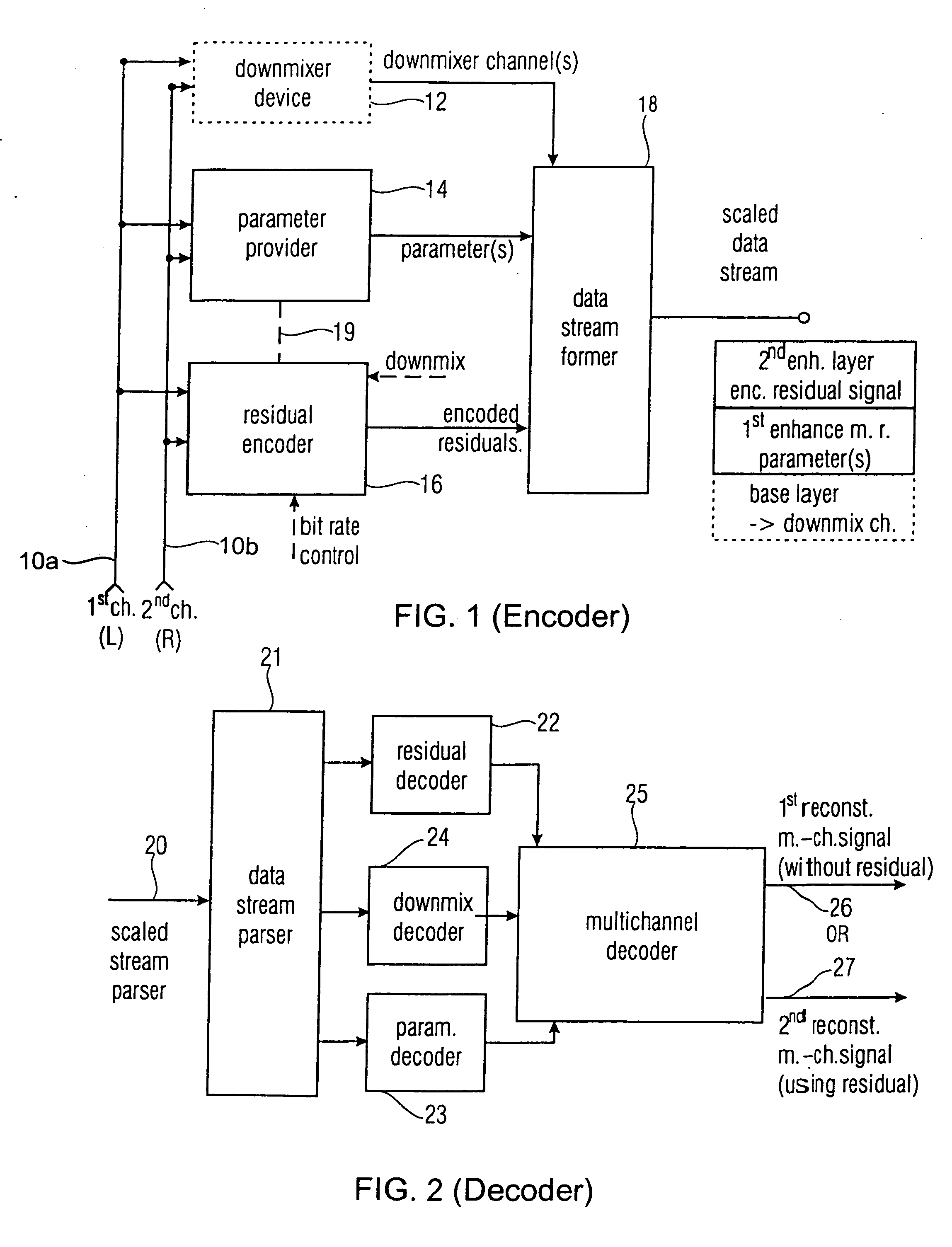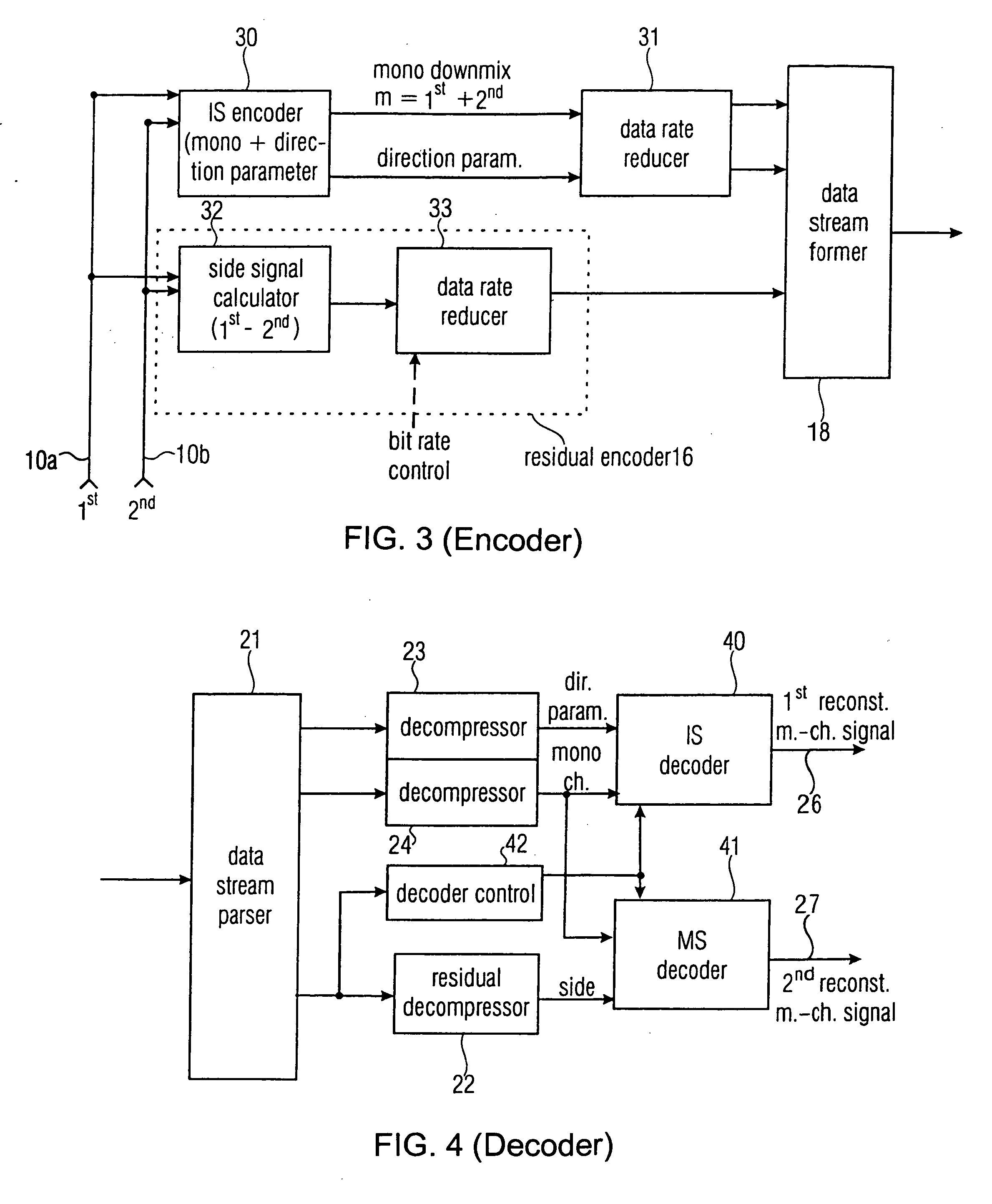Near-transparent or transparent multi-channel encoder/decoder scheme
a multi-channel encoder and decoder technology, applied in frequency-division multiplexes, data switching networks, instruments, etc., can solve the problems of time delay, limited parametric methods, and loss of m/s coding gain, so as to reduce redundancy in residual signals and reduce processing power. efficiency, the effect of reducing the redundancy
- Summary
- Abstract
- Description
- Claims
- Application Information
AI Technical Summary
Benefits of technology
Problems solved by technology
Method used
Image
Examples
Embodiment Construction
[0044]FIG. 1 shows a preferred embodiment of a multi channel encoder for encoding an original multi channel signal having at least two channels. The first channel may be a left channel 10a, and the second channel may be a right channel 10b in a stereo environment. Although the inventive embodiments are described in the context of a stereo scheme, the extension to a multi channel scheme is straight-forward, since a multi channel representation having for example five channels has several pairs of a first channel and a second channel. In the context of a 5.1 surround scheme, the first channel can be the front left channel, and the second channel can be the front right channel. Alternatively, the first channel can be the front left channel, and the second channel can be the center channel. Alternatively, the first channel can be the center channel and the second channel can be the front right channel. Alternatively, the first channel can be the rear left channel (left surround channel)...
PUM
 Login to View More
Login to View More Abstract
Description
Claims
Application Information
 Login to View More
Login to View More - R&D
- Intellectual Property
- Life Sciences
- Materials
- Tech Scout
- Unparalleled Data Quality
- Higher Quality Content
- 60% Fewer Hallucinations
Browse by: Latest US Patents, China's latest patents, Technical Efficacy Thesaurus, Application Domain, Technology Topic, Popular Technical Reports.
© 2025 PatSnap. All rights reserved.Legal|Privacy policy|Modern Slavery Act Transparency Statement|Sitemap|About US| Contact US: help@patsnap.com



